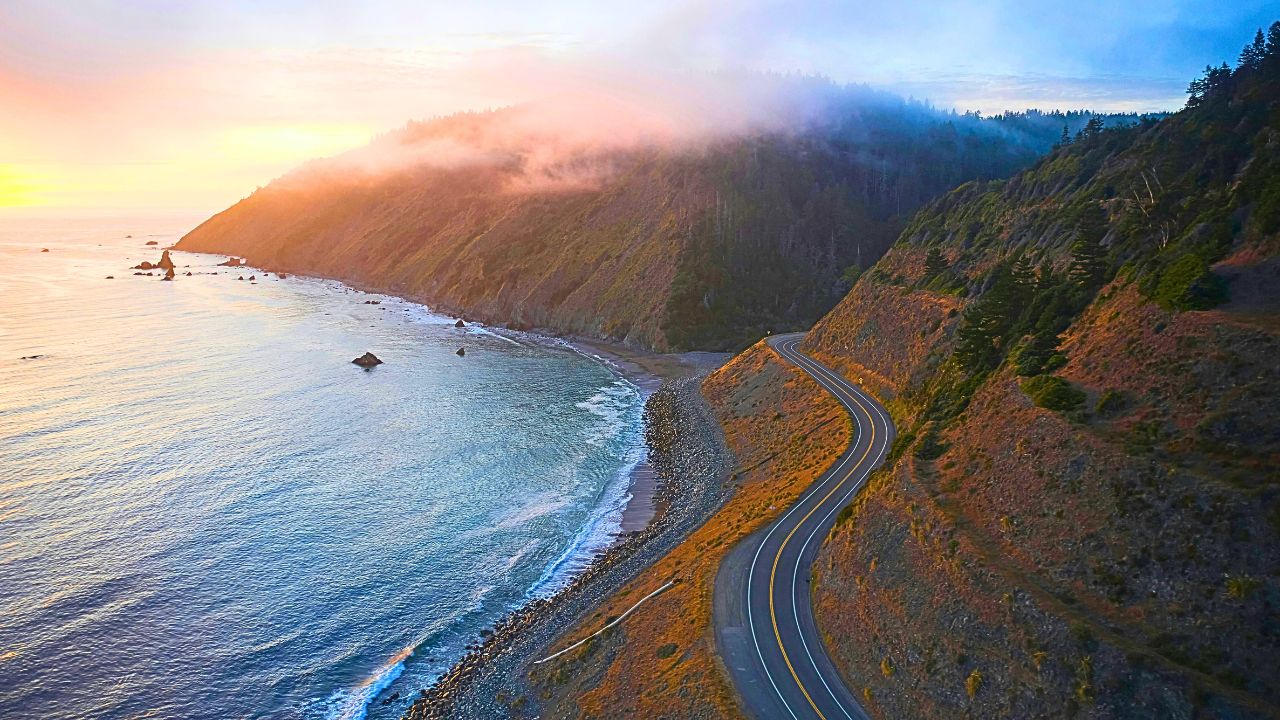8 Reasons California’s Ortega Highway Is Both Beautiful and Treacherous

Winding through the rugged Santa Ana Mountains, California’s Ortega Highway (State Route 74) is a road trip full of contrast breathtaking vistas paired with heart-pounding turns. Linking the coastal charm of San Juan Capistrano with the inland basin of Lake Elsinore, this scenic route draws motorcyclists, photographers, and thrill-seekers alike. The panoramic views, especially at sunrise or sunset, are unmatched but so are the risks. With narrow shoulders, blind curves, steep grades, and sudden shifts in weather, Ortega Highway is a beautiful yet unforgiving stretch of road that demands respect and full attention behind the wheel.
1. Scenic Views That Steal the Show

The Ortega Highway slices through a landscape of untamed chaparral, oak woodlands, and steep mountain ridges, revealing dramatic views at nearly every turn. Scenic pullouts near the crest offer sweeping panoramas of Lake Elsinore, the Temecula Valley, and, on crystal-clear days, even the silhouette of Catalina Island in the distance. At sunrise and sunset, the sky sets the hills ablaze with warm hues of orange, pink, and gold, a visual reward for early risers or dusk-time travelers. It’s a haven for photographers and nature lovers alike but always find a safe turnout before stopping to soak it all in.
2. Hairpin Turns That Test Your Nerves

This road is not for the faint of heart. Ortega Highway’s narrow lanes twist through tight S-curves, steep switchbacks, and sudden elevation changes that test even seasoned drivers. Many sections lack guardrails, with sheer drop-offs just inches from the pavement. Blind corners appear with little warning, especially in shaded areas where visibility dips. It’s not unusual to see tire marks from past misjudgments. For those unaccustomed to mountain driving, caution is crucial. Slow your speed, stay centered in your lane, and watch for oncoming traffic because one careless moment can quickly turn scenic into serious.
3. A Sunset Drive Like No Other

Evening is when Ortega Highway truly shines. As the sun dips toward the Pacific, the road is bathed in golden light, casting long shadows across the mountains and igniting the sky in oranges and purples. The higher you climb, the more dramatic the views sunset silhouettes of peaks, valleys glowing below, and occasional glimpses of the ocean horizon. It’s pure California magic. But with the beauty comes danger, low sun angles can cause blinding glare, and sharp turns become harder to navigate as light fades. It’s a time for awe, but also for heightened caution behind the wheel.
4. Rockslides and Flash Flood Warnings

Despite its scenic charm, Ortega Highway is no stranger to nature’s fury. After heavy rains, rockslides can send debris tumbling across the tight two-lane road with little warning. In wetter months, flash floods or mudslides may shut down entire sections, turning a peaceful drive into a stressful detour. Erosion and runoff from the steep cliffs make the highway particularly vulnerable. Smart travelers check weather and road conditions before heading out and carry essentials in case of unexpected delays. Out here, nature sets the terms and she rarely gives advance notice.
5. Biker Paradise With a Price

Ortega Highway holds a special place in the hearts of motorcyclists, thanks to its sweeping curves and thrilling elevation changes. Riders flock here for weekend joyrides, making it one of the most popular and unpredictable motorcycle routes in Southern California. But with popularity comes risk, groups of fast-moving bikers often round blind corners with little room to spare, and the narrow road leaves little margin for error. For drivers and riders alike, sharing the road demands focus, patience, and caution. It’s a playground for speed but one where a single misstep can spell disaster.
6. Wildlife Crossings in the Fog

Wildlife and weather are a constant presence on Ortega Highway. Coyotes, deer, and even elusive mountain lions inhabit the surrounding wilderness and occasionally cross the road especially during early morning or twilight hours. Add in dense fog that settles at higher elevations, and visibility can drop to just a few feet. These conditions turn routine curves into sudden hazards. With narrow lanes and limited reaction time, drivers need to stay especially alert. Keep headlights on, reduce speed, and treat every bend as if something might be just around it because often, something is.
7. Popular But Not Always Patrolled

For all its popularity, Ortega Highway often feels like a road through the wild. Long stretches are isolated, with spotty cell service and few signs of civilization. Law enforcement is limited, and in the event of an accident, it may take time for help to arrive. Mechanical issues or flat tires in these areas can quickly become stressful if you’re unprepared. That’s why it’s essential to plan ahead, carry water, a fully charged phone, and emergency supplies. And if you’re traveling solo, always let someone know your route and expected arrival. Out here, self-reliance matters.
8. A Route Rich in History and Hauntings

Ortega Highway is more than just a scenic route, it’s a road layered with history and legend. Once a trail used by Native American tribes, it later served as a vital passage for Spanish settlers and pioneers. Over time, the road gained a darker side, with stories of tragic accidents and whispered tales of hauntings. Locals speak of ghostly figures near certain curves or eerie sounds at night. Whether you’re drawn to the history or the folklore, there’s an unmistakable weight to the landscape like the hills are holding onto stories just out of reach.